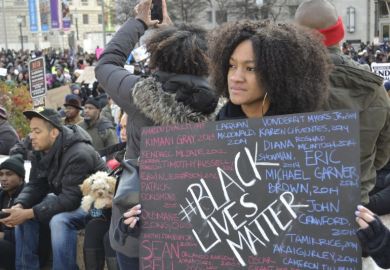Institutions must stop increasing enrolment of marginalised students if they aren’t prepared to provide these students with the discrete spaces they need to flourish. Moreover, the location and context of these spaces is telling. A room in a building is not enough. Sharing a space with other offices meant for purposes other than diversity and inclusion is not enough. Students of colour need their own space. Only when predominately white institutions stop seeing these spaces as optional, will they be able to say they are truly supporting students of colour.
A big part of students of colour feeling supported and making sense of their identity is a community that is created in spaces where people look like them, where they can be themselves, and where they feel understood. When policies, decisions or actions they encounter on campus serve as forms of microaggression towards students of colour, cultural centres are havens.
The professionals in these centres are advocates and educators. These spaces empower and teach students how to use their own voices. At the University of Connecticut, where I’m studying a master’s in higher education and student affairs, the African American Cultural Center (AACC) allows students of colour to be themselves. The people in the centre give them confidence and encouragement to go out and be bold. When students feel invisible in other spaces on campus, they’re welcomed with warmth and love in the AACC. When they feel they’re too far away from home and beginning to fall apart at the seams, there is someone in the centre who sees their potential and helps them hold it together.
I can speak to the strength of cultural centres in general, because I owe a large part of who I am to the cultural centre at my undergraduate institution, The College of Saint Rose. Our office of Intercultural Leadership fulfilled all of the same roles as U Conn’s AACC and more. In the midst of a predominantly white institution, my confidence grew. I felt safe and important. I felt there were people behind me who, even when I couldn’t, saw my true potential and never allowed me to do less than I was capable.
While one may argue that this is what other university offices are capable of and supposed to be doing for all students, I’d argue that students of colour need encouragement from someone who can recognise and empathise with their struggles. It takes someone in a place of power who looks like you and says you can achieve your goals too, despite the fact that you never saw yourself being able to reach so high.
U Conn, where there are five different cultural centres on campus, has set a standard. U Conn tells students of marginalised identities: “We see you. You are important.” That is by no means to say that U Conn has perfected its ability to break down the systems of oppression that it was built on. While U Conn must continue to work to break down these systems, the institution has attempted to make progress through the establishment of cultural centres. Just the act of trying leaves us with far more positive things to discuss than if no attempt is made at all.
Visiting a university and learning that it has a cultural centre is exciting. Learning that the cultural centre is in the basement of a library is deflating. It’s like saying: “Express your culture, but be quiet. You’re welcome.”
Are predominantly white institutions setting up their diverse student populations for success? The truth is, institutions are increasing the likelihood that students of colour will not be able to continue and thrive in their studies when they aren’t provided with a physical space of their own.
It must be a space where confidence and leadership is bred; a space to learn with and from those who look like you; a space to build comfort and community through the lens of your identity.
Higher education is still a white man’s world and, because of this, students of colour continue to feel the isolation and struggles of trying to live in it. We must give them the best chance of overcoming these challenges.
Elizabeth Ajagbe is a graduate assistant to the Higher Education and Student Affairs (HESA) programme at the University of Connecticut and is studying for her master’s in the HESA programme at the university’s Neag School of Education.
Register to continue
Why register?
- Registration is free and only takes a moment
- Once registered, you can read 3 articles a month
- Sign up for our newsletter
Subscribe
Or subscribe for unlimited access to:
- Unlimited access to news, views, insights & reviews
- Digital editions
- Digital access to THE’s university and college rankings analysis
Already registered or a current subscriber?




